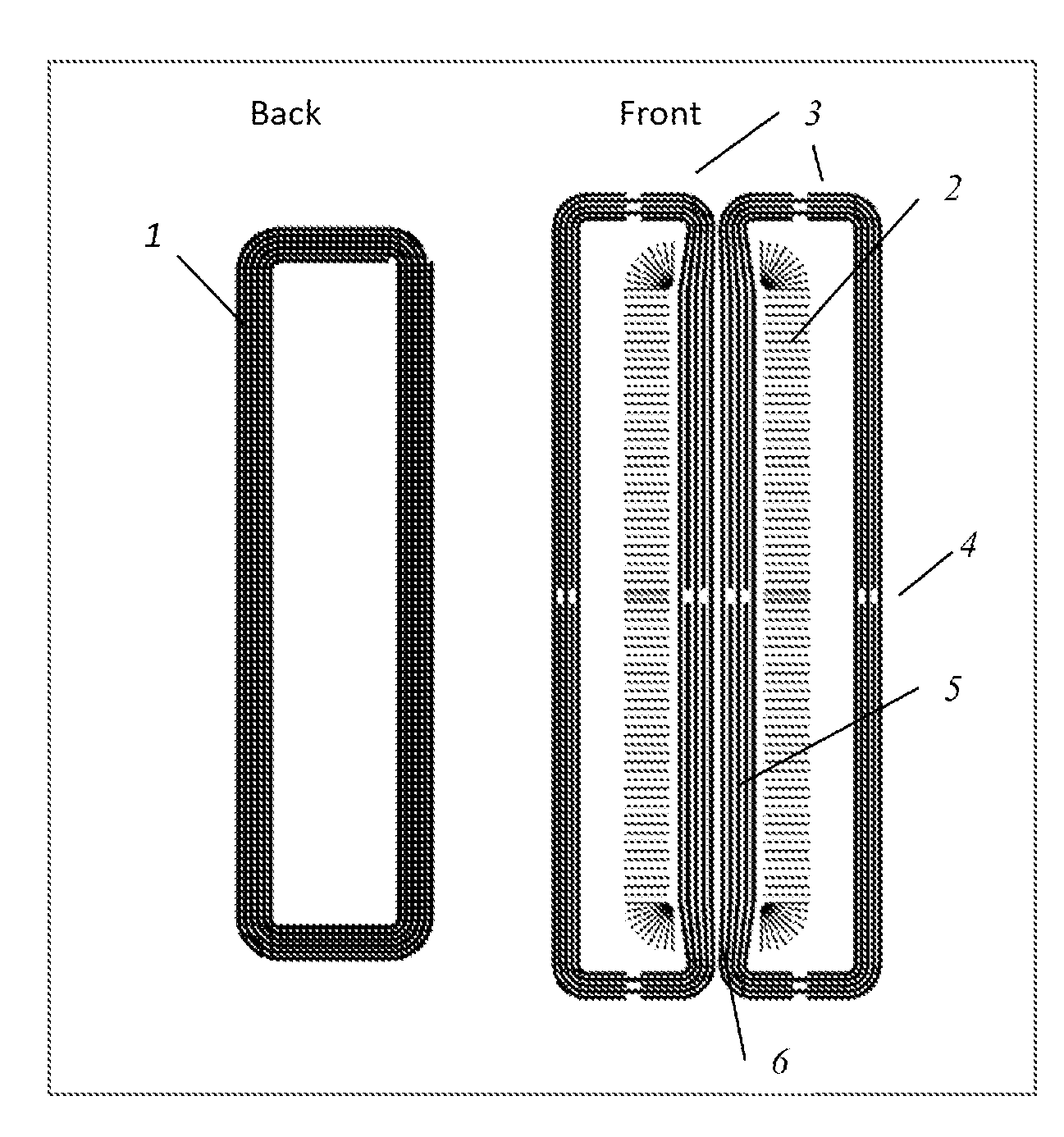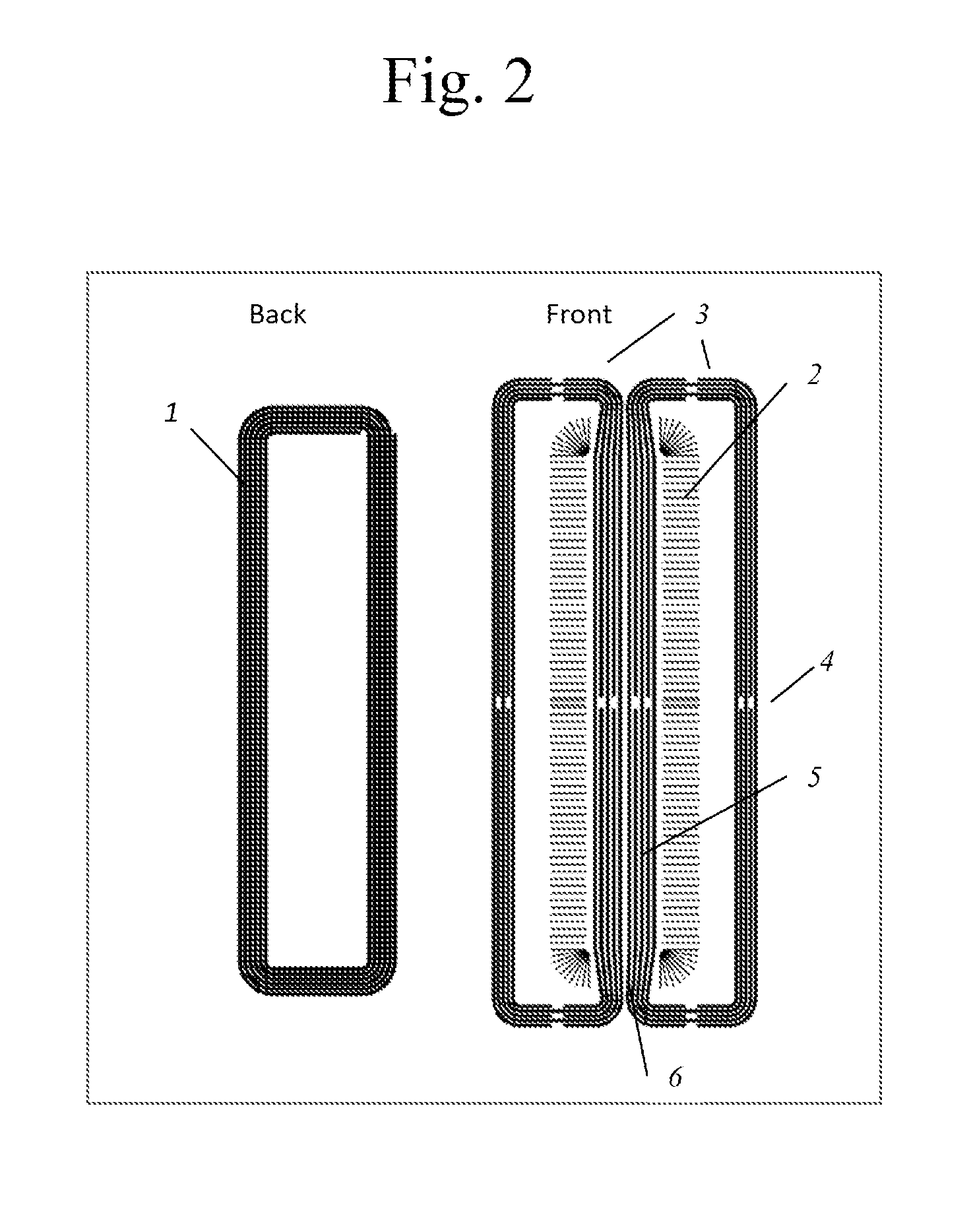Nmr RF probe coil exhibiting double resonance
a rf probe and double resonance technology, applied in the field of nuclear magnetic resonance, can solve the problems of the inability to detect the resonance of the probe coil, etc., to achieve the effect of maximizing coupling, minimizing electrical loss, and maximizing eddy current loss
- Summary
- Abstract
- Description
- Claims
- Application Information
AI Technical Summary
Benefits of technology
Problems solved by technology
Method used
Image
Examples
Embodiment Construction
[0031]The described embodiments provide doubly resonant coils that generate strong and homogenous magnetic field at two resonance frequencies. The current distribution in these two resonance modes is such that the magnetic fields within the sample region are orthogonal to each other. In a preferred embodiment, a set of two coils whose magnetic fields are orthogonal to each other within the sample region is used to excite and detect the two frequencies, thereby allowing for independent design optimization with almost negligible interaction between the two coils. In another embodiment, quadrature detection of NMR signal at one frequency may be achieved by designing two coils to operate at the same frequency.
[0032]The NMR probe coils, known in the prior art and operating at their fundamental resonance frequency, generate a magnetic field perpendicular to the substrate of the coil. The pair of coils straddling the sample on either side forms a Helmholtz pair, and the magnetic field homo...
PUM
 Login to View More
Login to View More Abstract
Description
Claims
Application Information
 Login to View More
Login to View More - R&D
- Intellectual Property
- Life Sciences
- Materials
- Tech Scout
- Unparalleled Data Quality
- Higher Quality Content
- 60% Fewer Hallucinations
Browse by: Latest US Patents, China's latest patents, Technical Efficacy Thesaurus, Application Domain, Technology Topic, Popular Technical Reports.
© 2025 PatSnap. All rights reserved.Legal|Privacy policy|Modern Slavery Act Transparency Statement|Sitemap|About US| Contact US: help@patsnap.com



